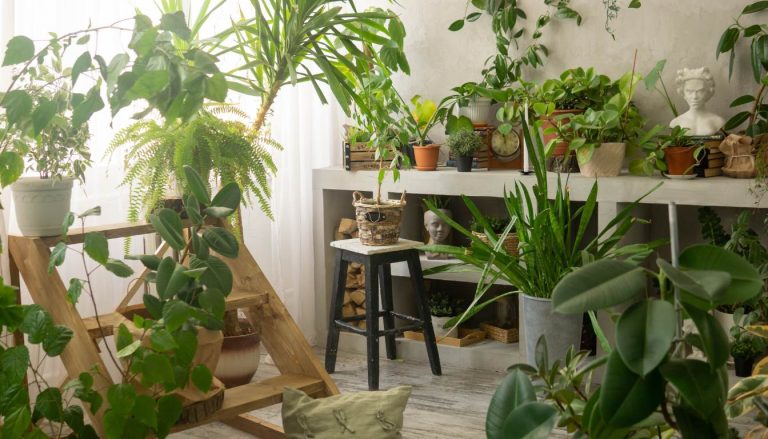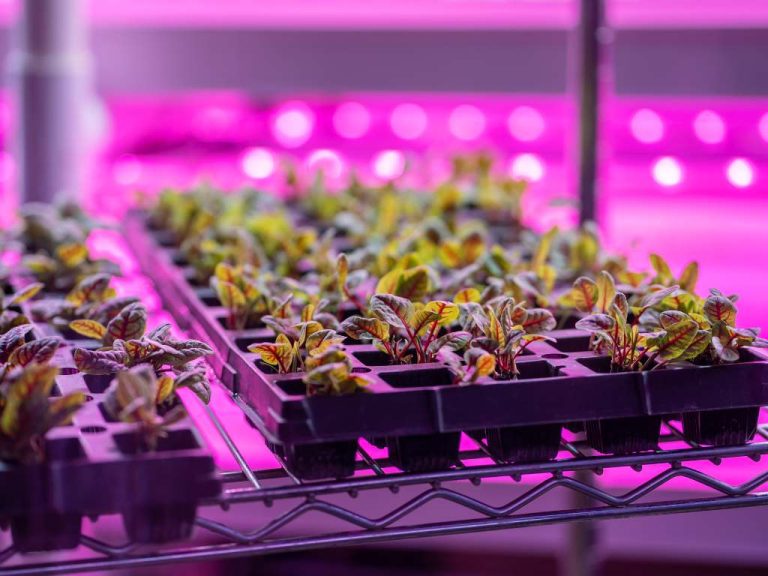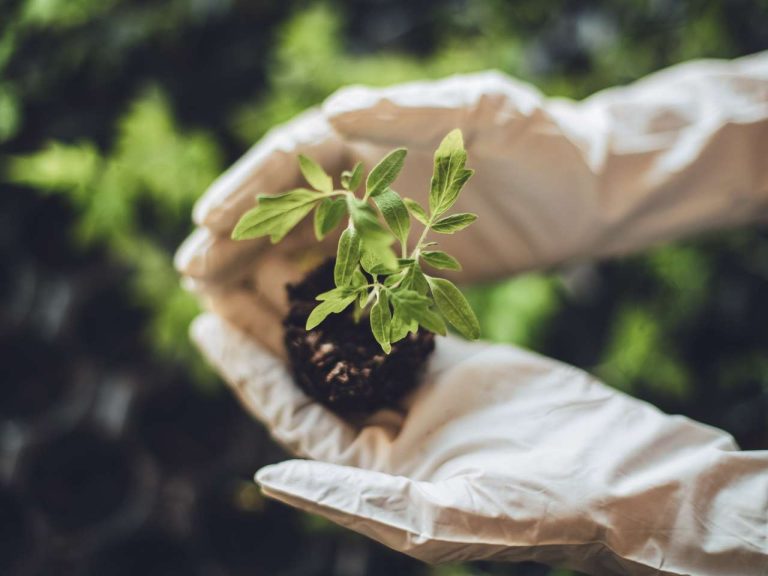How to Grow Organic Vegetables Indoors – A Handy Guide
Growing plants indoors is a great way to enjoy fresh, organic vegetables year-round, regardless of the weather or the amount of outdoor space available. With a few tips and tricks, you can create an ideal environment for your indoor vegetable garden. Let’s explore the necessary steps and considerations for successfully growing organic vegetables indoors.
Key Takeaways:
- How to Grow Organic Vegetables Indoors allows you to enjoy fresh vegetables all year round.
- Creating the perfect indoor garden setup involves considering the available space, access to electricity and water, and using high-efficiency LED lights.
- Choose vegetables that have shallow root systems and adapt well to container gardening for indoor growing success.
- Provide optimal conditions for your indoor vegetable garden, including proper lighting, temperature, humidity, watering, and nutrition.
- Maintain regular maintenance and pest management routines to ensure a healthy indoor garden.
- Apartment gardening is possible with the right plant selection, utilizing small-space options like snake plants, pothos, spider plants, and peace lilies.
Creating the Perfect Indoor Garden Setup
When it comes to setting up your indoor vegetable garden, there are a few essential elements to consider. First and foremost, you’ll need to think about the available space. The good news is, you don’t need a large area to grow your vegetables indoors. A compact area of just 4 square feet is sufficient. This means you can enjoy fresh, organic vegetables even if you have a small apartment or limited space.
In addition to space, you’ll need access to an electrical outlet and a water source. These are necessary for powering your lighting system and providing hydration to your plants. Speaking of lighting, the right choice of light is crucial for indoor gardening success.
Consider using a Glow Ring®, a high-efficiency LED light system designed specifically for indoor gardening. Using the right equipment and following the setup instructions provided by the manufacturer will help you create the optimal growing environment for your vegetables.
Selecting the Best Vegetables for Indoor Growing
When it comes to growing vegetables indoors, selecting the right plants is crucial for success. Not all vegetables are well-suited for indoor growing, as some require specific conditions or space that may not be feasible indoors. However, several varieties thrive in the controlled environment of an indoor garden.
One excellent choice for indoor vegetable gardening is leafy greens. Lettuce, spinach, and arugula are all well-suited for indoor growing, thanks to their shallow root systems and adaptability to container gardening. These greens not only provide a fresh and healthy addition to your meals, but they also grow relatively quickly and can be harvested multiple times.
Herbs are another great option for indoor gardening. Basil, mint, parsley, and chives are versatile herbs that can add flavor to various dishes. They are compact and easy to care for, making them ideal for smaller indoor spaces. Plus, having fresh herbs readily available in your kitchen is a convenient and delightful experience.
If you’re looking to grow compact vegetables indoors, consider cherry tomatoes, peppers, and small varieties of carrots and radishes. These vegetables are known for their compact growth habits and adaptability to container gardening. With proper care and adequate lighting, you can enjoy homegrown produce even in limited indoor spaces.
Providing Optimal Conditions for Indoor Vegetable Growth
Indoor vegetable gardens require specific conditions to ensure the healthy growth of plants. Lighting is a critical factor, as plants need adequate light for photosynthesis. Place your indoor garden in a spot that receives sufficient natural light, or supplement it with artificial lighting like fluorescent or special incandescent lights.
Temperature and humidity levels also play a crucial role in indoor gardening. Aim to maintain a temperature range between 58°F-86°F, which mimics the conditions found in plants’ natural environments. Additionally, provide adequate humidity by misting the plants or using a humidifier if necessary.
Proper watering and nutrition are essential for the success of your indoor vegetable garden. Follow recommended watering cycles for your specific plants, taking care not to overwater or underwater them. Additionally, provide the appropriate nutrients to support your plants’ growth and development.
Providing Optimal Conditions for Indoor Vegetable Growth
Creating the perfect environment for your indoor vegetable garden is essential to ensure healthy growth and a bountiful harvest. Here are some tips and ideas to help you provide optimal conditions for your plants:

1. Lighting
Lighting is crucial for photosynthesis, the process by which plants convert light into energy. Place your indoor garden in a spot that receives sufficient natural light, such as near a south-facing window. If natural light is limited, supplement with artificial lighting. Use fluorescent or special incandescent lights that emit the full spectrum of light necessary for plant growth.
2. Temperature and Humidity
Most indoor vegetable plants thrive in temperatures between 58°F-86°F. Avoid placing your garden in areas with extreme temperature fluctuations, such as near drafts or heating vents. Additionally, plants require adequate humidity levels to prevent drying out. Mist your plants regularly or use a humidifier to maintain the optimal humidity for your vegetables.
3. Watering and Nutrition
Proper watering is crucial for the success of your indoor vegetable garden. Avoid overwatering or allowing the soil to dry out completely. Regularly check the moisture levels and water your plants accordingly. Additionally, provides the necessary nutrients for your plants’ growth. Use organic fertilizers or compost to enrich the soil and ensure your vegetables receive the essential nutrients they need.
Tips for Maintenance and Pest Management
Maintaining a healthy indoor vegetable garden requires regular maintenance and effective pest management strategies. By following these tips, you can ensure the success and longevity of your indoor garden.
Harvest Frequently and Monitor Plant Growth
Regularly harvesting your vegetables is essential for promoting healthy plant growth and preventing overcrowding. Be mindful of how close your plants are to the light source, ensuring they have enough space to grow without causing damage. This will also help prevent any shading of other plants in your indoor garden.
When monitoring plant growth, be on the lookout for any signs of stress or disease. Check for yellowing leaves, wilting, or unusual spots that may indicate pest infestations. By catching these issues early on, you can take immediate action to prevent further damage.
Implement Pest Checks and Use Natural Remedies
Pests can be a common challenge in indoor gardening, but there are steps you can take to manage them effectively. Implementing regular pest checks as part of your maintenance routine will allow you to identify any garden critters early on.
If pests are present, carefully remove affected seedlings and wash them with a solution of soapy water. This can help remove pests and their eggs from the plants. Alternatively, you can use insecticidal soap, which is a natural and safe option for controlling pests in your indoor garden.
Read – Indoor Garden Pest Control
Prevent Damage from Spraying
When watering your indoor vegetable garden, be cautious not to spray the plants directly in front of the lights. Excessive moisture can cause damage to the leaves and flowers, especially in the presence of intense light sources. Instead, water the base of the plants or use a watering can with a narrow spout to control the flow of water.
Additionally, consider using a tray or saucer underneath your plant containers to catch any excess water and prevent it from pooling. This will help maintain the optimal moisture level for your plants without risking damage from overwatering.
By implementing these maintenance and pest management tips, you can ensure the health and vitality of your indoor vegetable garden. With proper care, your plants will thrive, and you’ll enjoy a bountiful harvest of fresh, organic vegetables from the comforts of your home.
Read – Organic Indoor Plant Pest Spray
Recommended Indoor Plants for Apartment Gardening
If you’re living in an apartment with limited space, you can still enjoy the benefits of indoor vegetable gardening. With the right plants and a few clever techniques, you can create a thriving garden right in your own home. Here are some tips and ideas for apartment gardening.
Choose Space-Saving Plants
When selecting plants for your apartment garden, opt for varieties that are suitable for small spaces. Snake plants, pothos, spider plants, and peace lilies are excellent choices. These plants are known for their adaptability and ability to thrive in various lighting conditions, making them perfect for apartments with limited natural light.
Maximize Vertical Space
In apartments, space is a precious commodity. To make the most of your available area, utilize vertical gardening techniques. Hang planters or install shelves to create vertical gardens. You can also use a trellis or vertical garden system to grow climbing vegetables like cucumbers or beans. By going vertical, you can maximize your indoor vegetable garden without sacrificing valuable floor space.
Utilize Pots and Planters
Pots and planters are essential for apartment gardening. Choose containers that suit the size and growth habits of your plants. Additionally, consider using self-watering containers to provide consistent moisture for your vegetables. These containers have a reservoir that automatically waters your plants, reducing the need for frequent watering.
FAQ
What size area do I need for an indoor vegetable garden?
You only need 4 square feet of space for an indoor vegetable garden.
What equipment do I need for an indoor vegetable garden?
You’ll need access to an electrical outlet, a water source, and a Glow Ring® LED light system designed for indoor gardening.
Which vegetables are best for indoor growing?
Vegetables with shallow root systems and adaptability to container gardening, such as leafy greens (lettuce, spinach, arugula), herbs (basil, mint, parsley, chives), and compact vegetables (cherry tomatoes, peppers, small carrots, radishes).
What lighting is best for indoor vegetable gardens?
Place your indoor garden in a spot with sufficient natural light or supplement it with artificial lighting like fluorescent or special incandescent lights.
How should I maintain temperature and humidity levels for indoor vegetable growth?
Maintain a temperature range of 58°F-86°F and provide adequate humidity by misting the plants or using a humidifier if necessary.
How do I water and provide nutrition to my indoor vegetable garden?
Follow recommended watering cycles and provide the appropriate nutrients for your plants’ growth.
How do I maintain and manage pests in my indoor vegetable garden?
Implement regular maintenance, harvest frequently, perform pest checks, remove affected seedlings, wash with soapy water, or use insecticidal soap if pests are present.
Can I grow vegetables indoors in a limited space, like an apartment?
Yes, you can choose indoor plants suitable for small spaces like snake plants, pothos, spider plants, and peace lilies. Use pots, planters, and vertical gardening techniques to maximize space.
- 20+ Chic Boho Bedroom Ideas for a Cozy and Stylish Retreat - June 20, 2024
- 12+ Modern Boho Living Room Ideas to Create a Unique Oasis - June 10, 2024
- 10 Stunning Canopy Bed Ideas for a Dreamy Escape - May 16, 2024







